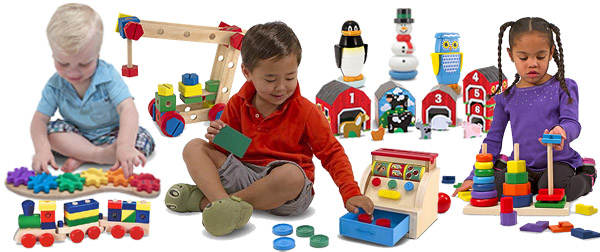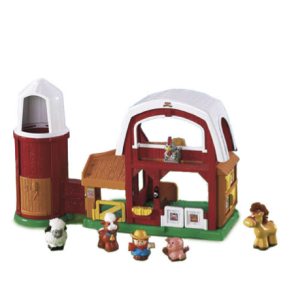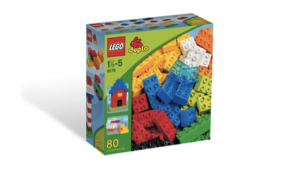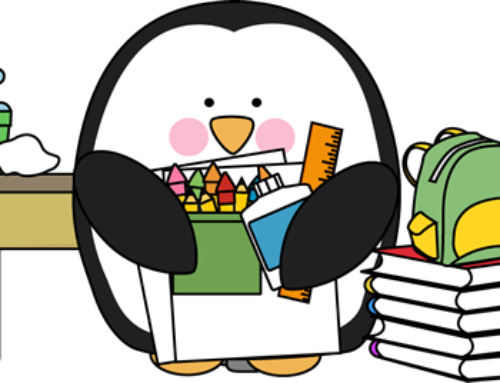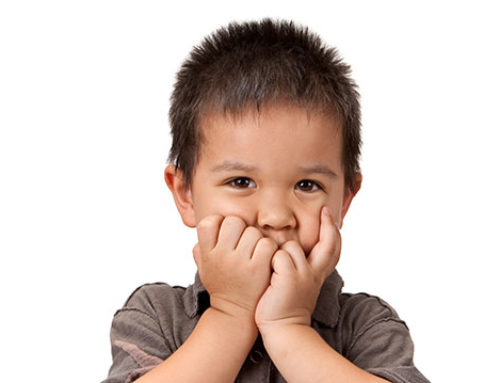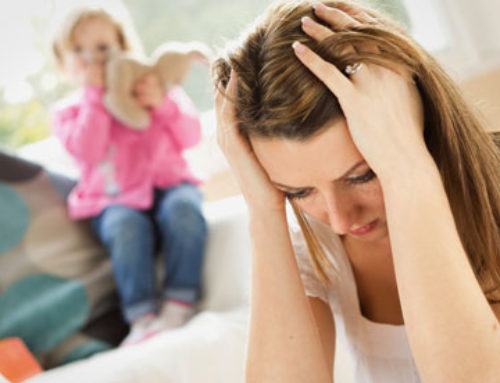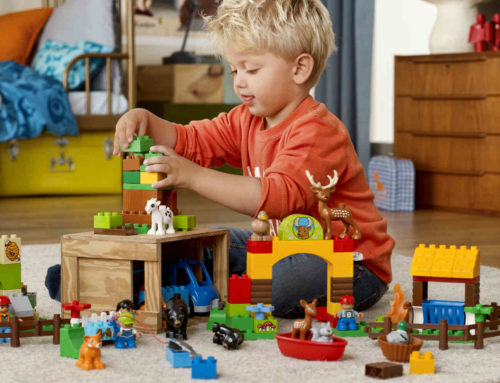I love toys. I’d be lying if I said I wasn’t the most excited person in the house when the toy sale catalogues come along. Fortunately for me, being a speech pathologist and a mum means that I am surrounded by toys a lot. I love the way they entertain and engage our children, but more importantly how the right toys can open them to learning!
Now it’s no secret that the best toys for children aren’t necessarily toys at all. Empty bottles and boxes can turn into castles, robots and musical instruments. Sticks, leaves and mud can become gourmet pies or a dinosaur swamp. The possibilities are endless!
The problem is, not too many people are game enough to turn up to a birthday party saying, “Happy Birthday Jack! Here are some sticks I collected from your garden. Now go wild you crazy kid!”. Santa too would lose lots of his street cred if Christmas morning was a case of, “Merry Christmas Lucy! You’ve been such a good girl this year. Here’s an empty box guaranteed to give you hours of fun”.
So if toys are here to stay, we might as well make sure we are giving our children good ones. Now I know you could walk into almost any store, find the toy aisle and pick up something that says it’s educational, without breaking a sweat. Don’t let that fool you. Not all toys are created equal. So put down those flash cards and that amazing, new and improved colour/shape/letter/number contraption and back away slowly!
The best toys are the ones that can be used in a variety of ways to allow for creative, open-ended play. Since I am often asked what toys I recommend most for children (particularly children with speech and language delays or learning difficulties), I have put together the following list of my top picks. So here they are (in no particular order)…
1. A Farm set
A farm set is a very easy way to introduce sound play for children who aren’t talking very much yet. You can have lots of fun making animal noises together, as well as lots of other great sounds such as “brmmm” for the tractor and munching noises when the hungry cows are eating some grass. Once your child is using words there is so much they will be able to talk to you about while you play together. They will be learning and using a great range of nouns (naming words such as “pig” and “mud”), verbs (action words such as “eat”, “drinking”, “jumped”) and adjectives (describing words such as “big”, “dirty”, “yellow”) as well as lots of basic concepts (in, on, between). Before you know it your child will be discussing detailed storylines with you and acting out some amazing farmyard adventures.
Personally, I’m a big fan of the Fisher-Price Little People Range. I bought their Animal Sounds Farm Super Set a few years ago and it is still going strong. The size of the pieces is great for little hands. It makes cute sounds too, however, I usually turn the sounds off (or take the batteries out) because you want the kids to be making the sounds – not the toy!
2. Blocks
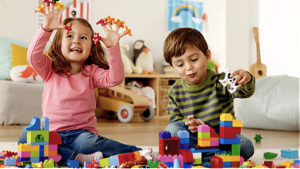
The possibilities are endless with this one! There are so many different types of “blocks” available. You really can’t go wrong with a traditional set of plain, solid wooden blocks. However, for younger children I also love the DUPLO® range from LEGO®. The size of the DUPLO bricks is perfect for little fingers to grasp, hold and manipulate. The bright colours are fun and more importantly it is durable! My parents still bring out the DUPLO from when I was a child whenever the grandkids come over to play. Playing with blocks is a fantastic language building activity. It provides opportunities to learn and talk about basic concepts such as tall/short and more/less, as well as practice turn taking and problem solving skills. There are also lots of opportunities for pretend play because if you can imagine it, you can build it.
There are many different themed DUPLO sets available and these can be fun if you are adding to your collection. My 3 year old got a superhero set for his birthday and promptly lost his mind! If you are just starting out in the DUPLO universe however, a basic set of bricks will let their imagination run wild.
3. Kitchen Play
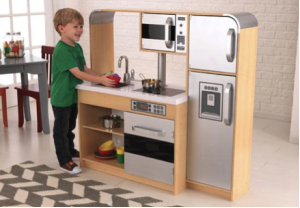
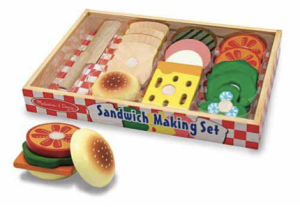 I have seen some amazing play kitchens around lately. If you have the space for one, they are a great investment. If not, there are many smaller items such as a tea set and pretend food that are fantastic ways to encourage your child to role-play familiar routines and scenarios. Pretend food is also a great way to expose fussy eaters to new foods, or familiar foods that you would like them to eat more of!
I have seen some amazing play kitchens around lately. If you have the space for one, they are a great investment. If not, there are many smaller items such as a tea set and pretend food that are fantastic ways to encourage your child to role-play familiar routines and scenarios. Pretend food is also a great way to expose fussy eaters to new foods, or familiar foods that you would like them to eat more of!
I love the Melissa & Doug® range of food play sets. They have lots of variety including fruit and vegetables, sandwiches, sushi, pizza, and a grill set. Cooking (both real and pretend) is a great way for kids to practice their listening and comprehension skills as they follow recipes and instructions to create their own culinary masterpiece.
4. Baby doll
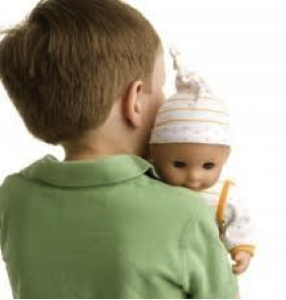 Toys are toys. Plain and simple. I do not believe in “girls toys” vs. “boys toys”. I think a “baby” is a wonderful and very important toy for both little girls and boys to have. It allows them to replicate what they experience every single day. This helps them learn more about themselves and the world around them. Feeding the baby, bathing, dressing and putting the baby to bed are all ways children develop their cognitive, fine motor and self help skills while simultaneously learning new words for body parts, clothing, actions and feelings.
Toys are toys. Plain and simple. I do not believe in “girls toys” vs. “boys toys”. I think a “baby” is a wonderful and very important toy for both little girls and boys to have. It allows them to replicate what they experience every single day. This helps them learn more about themselves and the world around them. Feeding the baby, bathing, dressing and putting the baby to bed are all ways children develop their cognitive, fine motor and self help skills while simultaneously learning new words for body parts, clothing, actions and feelings.
5. Dress Ups
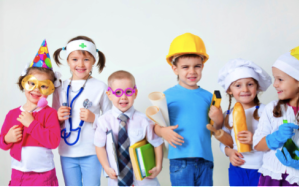 I’m not talking about the licensed character kind of costumes here. Although I admit seeing Elsa and Spiderman casually pop into the supermarket with mum or dad is pretty cute. The dress ups I’m referring to are a doctor’s kit, a tool belt, a fireman’s hat, a pirate’s telescope, a lifeguard’s whistle, mum’s bag or dad’s shoes. Anything that encourages them to take on a role and tell a story!
I’m not talking about the licensed character kind of costumes here. Although I admit seeing Elsa and Spiderman casually pop into the supermarket with mum or dad is pretty cute. The dress ups I’m referring to are a doctor’s kit, a tool belt, a fireman’s hat, a pirate’s telescope, a lifeguard’s whistle, mum’s bag or dad’s shoes. Anything that encourages them to take on a role and tell a story!
But what about….?
I know, I know! How can I possibly have a list of top toys without any mention of Books, Music and Craft activities? Well… where do I begin? I cannot stress enough just how important it is for children to have books. In saying that, it’s clearly not the best idea to hand your toddler a prized, first edition copy of Alice in Wonderland. Likewise, music and craft can play a huge role in developing children’s speech and language skills and so much more. Nursery rhymes, playdoh, musical instruments, painting, the list goes on… and on and on! So much so, that I think books, music and craft are really topics for another day!
So there you have it!
A selection of toys that will have your kids entertained and learning lots, and there isn’t a single flash card or ABC/123 in sight! I know the items on this list might seem expensive, but they don’t have to be. Trust me, I have never paid full price for anything on this list. Keep an eye on the catalogues, shop around online, eagerly await the big toy sales and you’re likely to be rewarded with some pretty good savings. Keep in mind too that if you can afford it, it may be a better investment to spend a bit more and purchase good quality items that will last a long time.
If you’re after toys for babies, check out our previous post on top toys for babies and infants.
Don’t forget to Like Modern Speechie on Facebook for more information and tips to help children be the best communicators they can be!
NOTE: The opinions expressed in this post are purely my own. I am not sponsored by any of the aforementioned companies.

